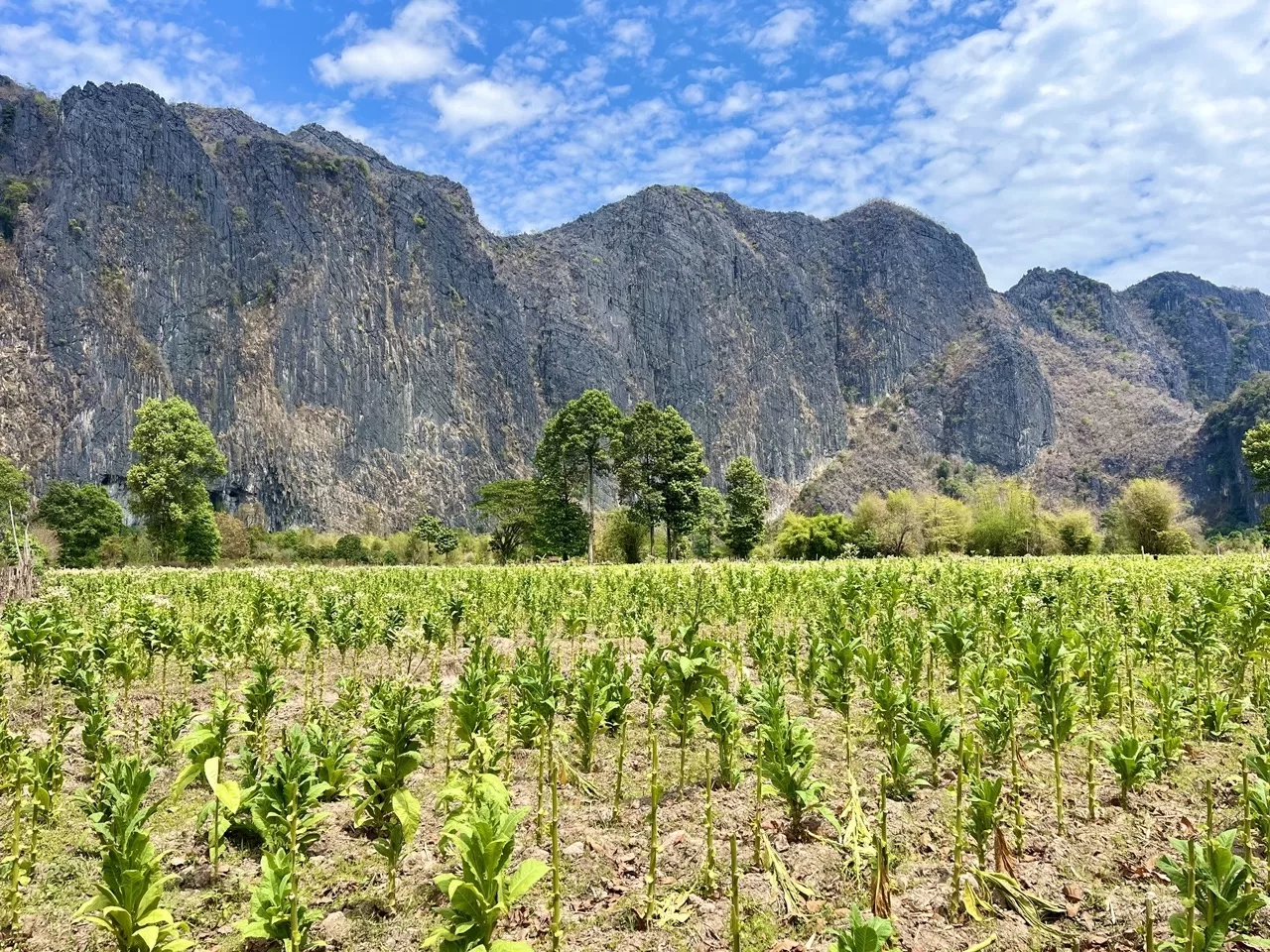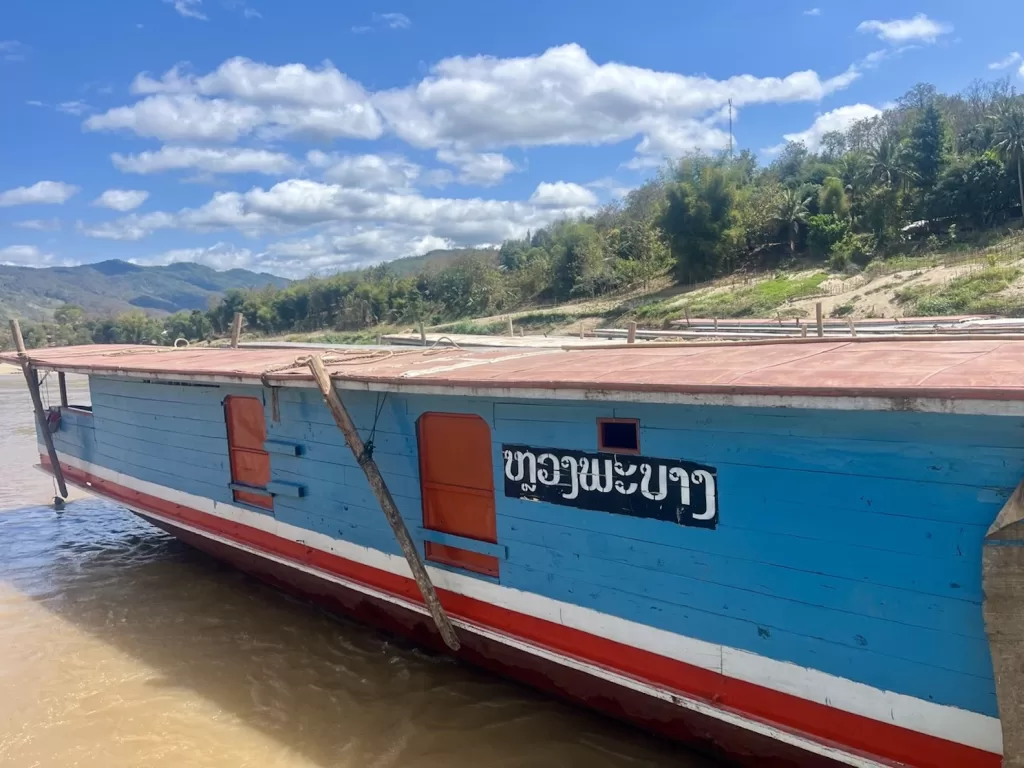Which way should you do the Thakhek Loop?
Clockwise, counter-clockwise. Or neither, perhaps?
The Thakhek Loop is one of the best adventures that the beautiful country of Laos has to offer.
Towering cliffs and limestone formations, caves, and vibrant rice fields highlight the 450 kilometer loop, which generally takes between 3-5 days to complete.
I’m going to lay out all of your directional options to help you decide which way you should do the Thakhek Loop. Clockwise and counter-clockwise are the first two options- but they’re not the only ones.
Map and Outline of the Thakhek Loop
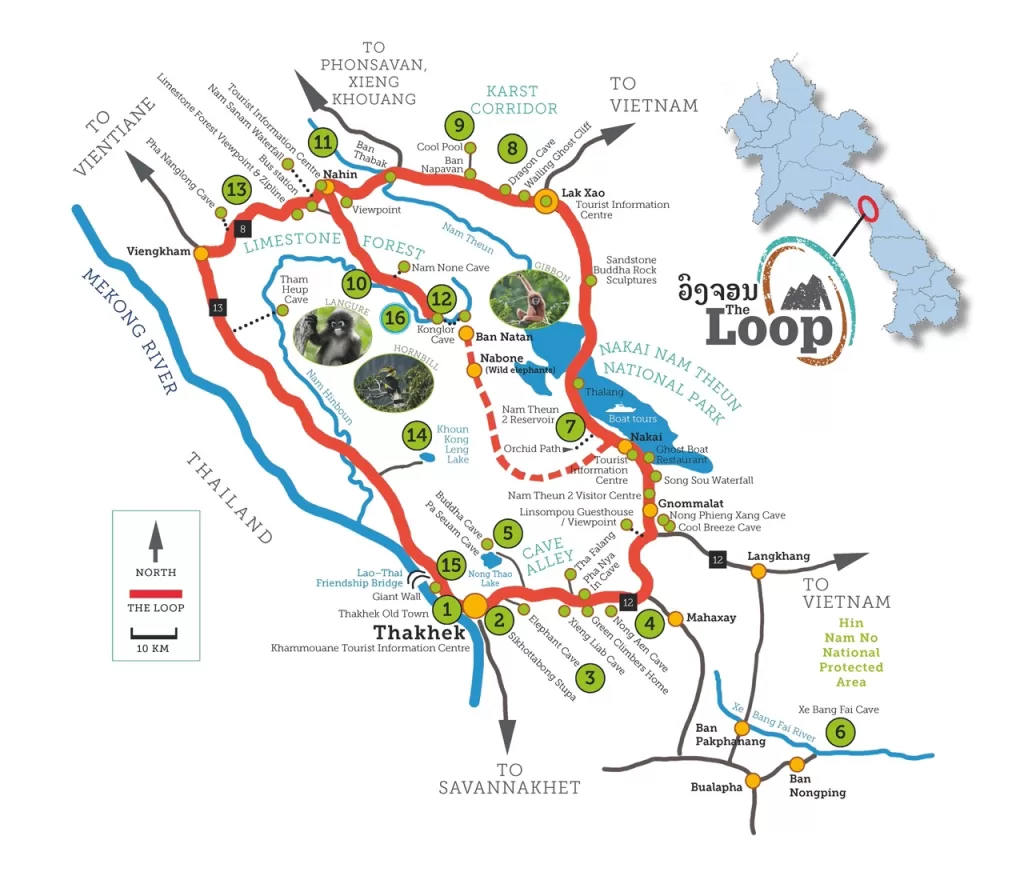
For the sake of my arguments for your route options, let’s split the Thakhek Loop into four sections.
The loop starts in the bottom-left corner with Thakhek, and forms what we could generously call a four-sided shape, with two shorter sides and two longer sides.
Each of these four parts of the loop are pretty unique, and it’s necessary to detail each one in order to explain my suggestions for which route you should take. Bear with me.
The bottom section is called Cave Alley, as you can see on the map. Hopefully your intelligence will permit me to not go through the effort of explaining what you’ll find here.
Caves. Nice ones, too. Some say this is the nicest bit of the loop. I don’t personally agree, but it’s certainly quite beautiful.
The right-hand section is harder to explain. It contains some awesome views, small villages, and the best roads of the loop to drive on, in my opinion.
The top section is where it’s at. Best part of the loop.
And the left-hand section is where it’s not. Just highway.
These sections are the ones you’ll want to focus on when planning which way to go on the Thakhek Loop.
Clockwise vs Counter-clockwise
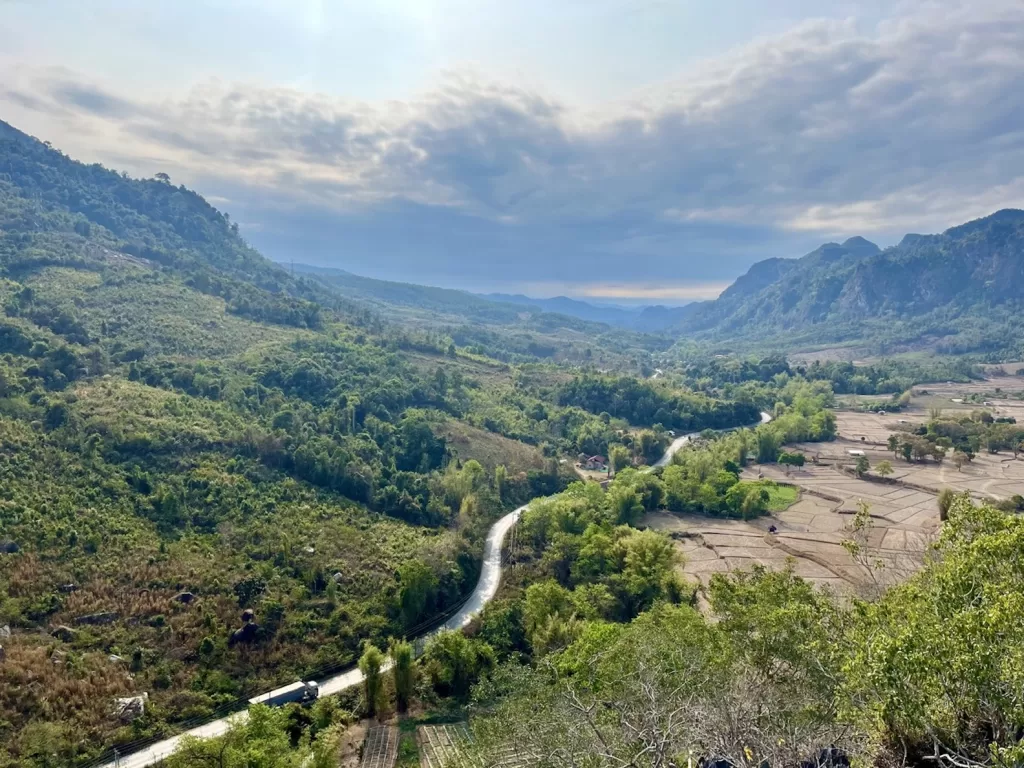
Reasons to go clockwise
If you go clockwise, you’ll be starting with the left-hand section of the loop. Which is over 2 hours of straight, uninterrupted highway. Not much scenery, just lots of dust and trucks shooting past you with a death wish for all in their path.
Not too fun. And as I’ll explain later, I never even did it.
But there are positives to starting with the highway. Namely that once you finish that boring first day, everything is up from there. It’s the advice I give for the Mae Hong Son Loop in Thailand among others, which is to get the crappy stuff out of the way quickly.
And after completing the roughest section of the loop, you’ll immediately get the best section for your efforts. Which is nice, of course- but keep in mind that you may be a little underwhelmed for the remaining sections of the loop.
Reasons to go counter-clockwise
If you go counter-clockwise, you keep the best section of the loop and the highway for last.
It’s the most popular way to do the loop. Almost everybody I met was going in this direction, so if you’re solo and meeting people is a factor, going counter-clockwise is a wise choice.
But of course, there’s no denying that you’re in for a pretty crappy last day.
Why the weather should be the deciding factor
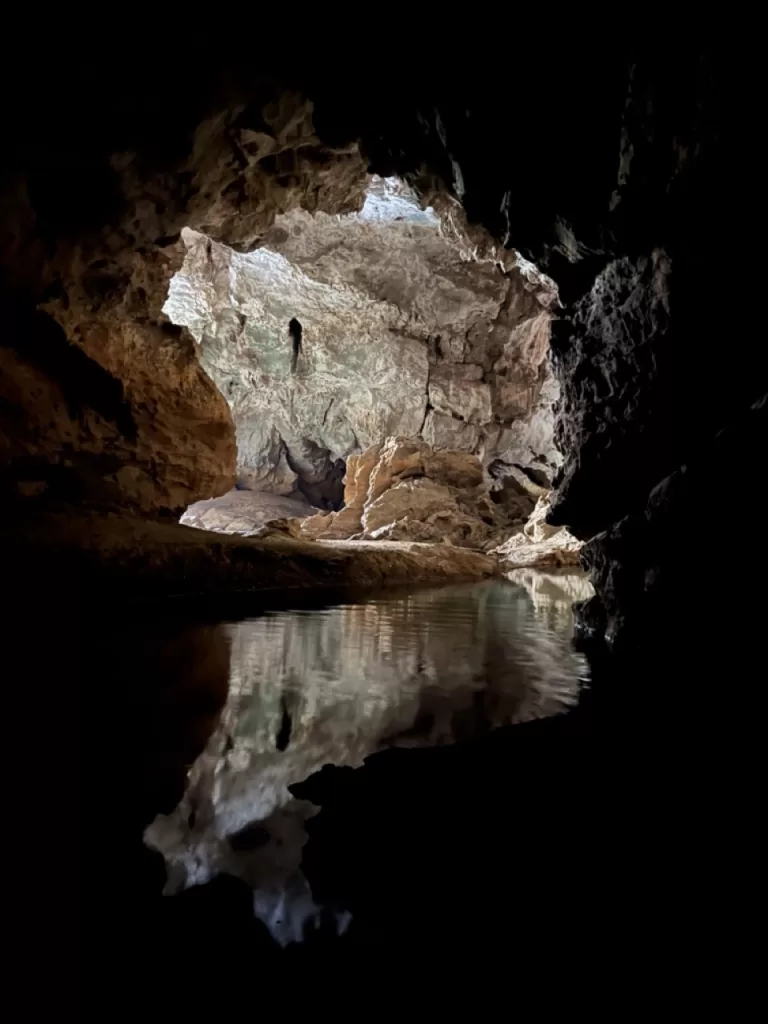
At the end of the day, there are clearly pros and cons for either direction, and I’ve likely not helped you decide at all to this point.
But there’s one factor that should help you make up your mind- the weather.
The weather in southern Laos can be pretty temperamental. It’s likely that you’ll get a mix of nice days and some not so nice days.
You’re going to want to make sure to save the nicest days for the nicest parts of the loop, and vice versa.
Let’s say you’re just starting the loop and the weather is pretty crap, but the next day looks great. Head to the highway and get it over with. Then you wake up in the nicest section of the loop with great weather.
Common sense, my friends.
Who needs the highway?

Going clockwise or counter-clockwise is for plebeians. Simpletons, and the like.
Why take the highway when you can simply turn around, and take everything in but in the opposite direction?
And contrary to what you might think, going this way doesn’t even extend the time it takes to do the loop so substantially, only adding around two hours to your total trip. Which, in the grand scheme of things, is really not that big a deal.
This is what I judged to be the best way of doing the loop- and it’s what I ended up doing.
Nevertheless, it will add one night to your trip (unless you really rush things). I didn’t personally mind as I had plenty of time, but if you have a shorter timeframe for your trip it’s a tougher call to make.
But you shouldn’t worry about running out of things to do on the way back. There’s plenty to keep you occupied, as I’ll go through in a later post. For now, this one will suffice.
Who needs the highway (or roads)?
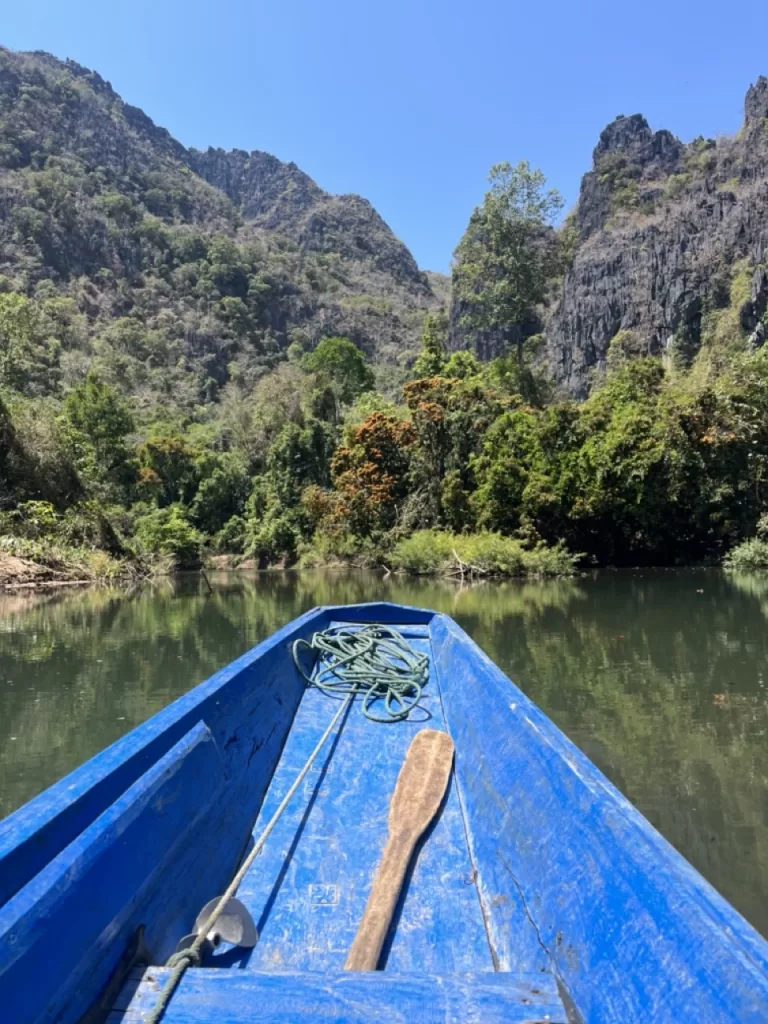
Now for our last possible option.
This is, I would say, the obvious best option- provided you’re ready to throw down some extra cash.
If you look back up on the map, you’ll notice that there’s an offshoot from the top section of the loop cutting down into the middle.
This is the detour to the famous Kong Lor Cave, which you’ll probably be visiting regardless. It’s a popular day trip where you take a boat on a river through the cave and out the other end.
Now, there does happens to be an option where you can take your bike with you on a boat through the Kong Lor Cave.
You then pop back out on the other side, having skipped the highway without adding an extra day to your trip. Take a look at the dotted red line on the map if to get a visual.
It’s an unquestionably cool and adventurous way to do the loop.
The problem is in the price. I’m not exactly sure, but it costs at least 800k Kip and likely over 1 million ($50 USD). For a country as cheap as Laos, this is exorbitant.
Nevertheless, if you have the money to shell out, it’s something to consider.
So, which way should you do the Thakhek Loop? As usual, the answer is not quite so simple. But I hope I’ve given enough tips to make you well-informed and ultimately choose the best route given your unique preferences and circumstances.

